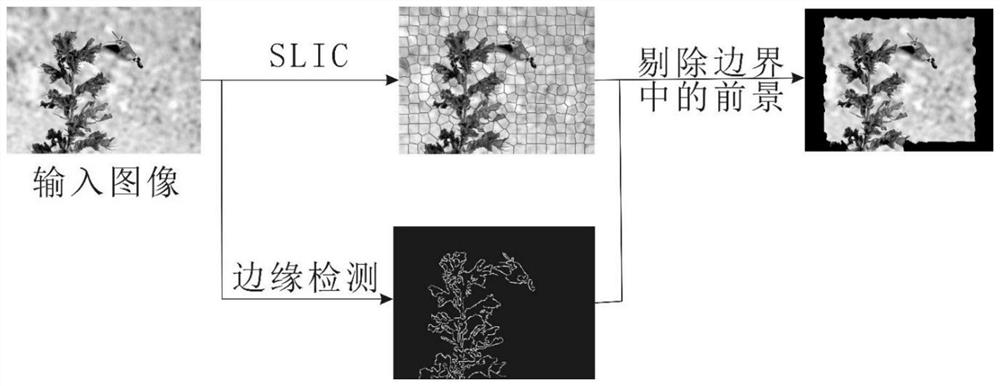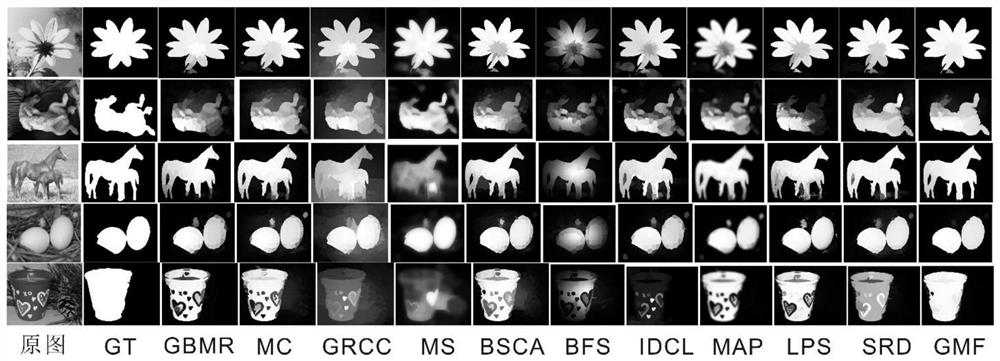An image saliency detection method based on an improved graph model
A graphical model and salient technology, which is applied in the field of image detection and computer vision, can solve the problems of not evenly highlighting the interior of salient objects, incomplete detection of salient objects, etc., and achieve the effect of improving accuracy
- Summary
- Abstract
- Description
- Claims
- Application Information
AI Technical Summary
Problems solved by technology
Method used
Image
Examples
Embodiment 1
[0095] This embodiment provides an image saliency detection method based on an improved graph model, see figure 1 , the method includes the following steps:
[0096] Step 1. Segment the input image into N superpixels using Simple Linear Iterative Clustering (SLIC), and the i-th superpixel is denoted by v i Indicates that the jth superpixel is denoted by v j Indicates that i, j ∈ 1, 2, ..., N.
[0097] Step 2. Use the underlying features of the image to calculate the similarity between the superpixels to form a similarity matrix A=[a ij ] N×N , a ij Denotes superpixel v i and v j The degree of similarity, i, j∈1, 2,..., N;
[0098] (2.1) CLELAB color mean value c=(l, a, b) of the pixels included in the superpixel T To represent the color feature of the superpixel, the 59-dimensional vector t formed by the equivalent mode of the local binary pattern (LBP) represents the texture feature of the superpixel; the superpixel v i and v j The color feature distance Dc ij and ...
PUM
 Login to View More
Login to View More Abstract
Description
Claims
Application Information
 Login to View More
Login to View More - R&D
- Intellectual Property
- Life Sciences
- Materials
- Tech Scout
- Unparalleled Data Quality
- Higher Quality Content
- 60% Fewer Hallucinations
Browse by: Latest US Patents, China's latest patents, Technical Efficacy Thesaurus, Application Domain, Technology Topic, Popular Technical Reports.
© 2025 PatSnap. All rights reserved.Legal|Privacy policy|Modern Slavery Act Transparency Statement|Sitemap|About US| Contact US: help@patsnap.com



